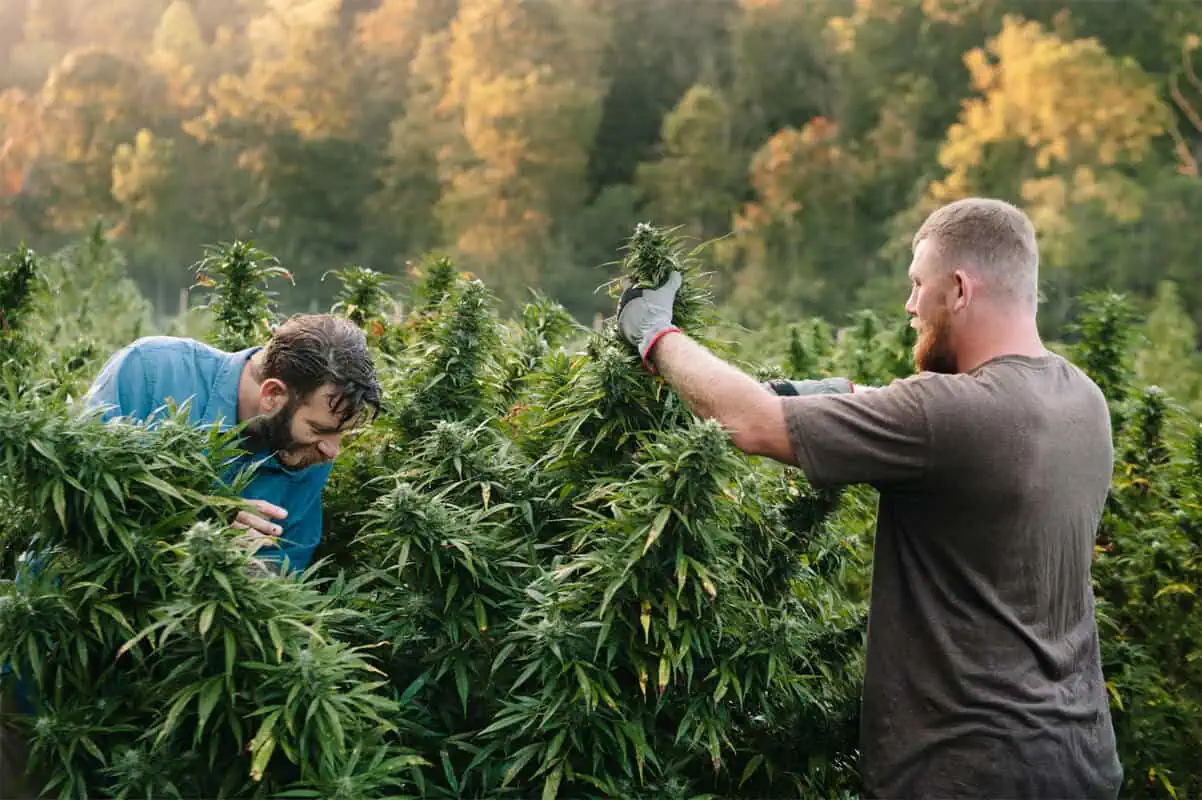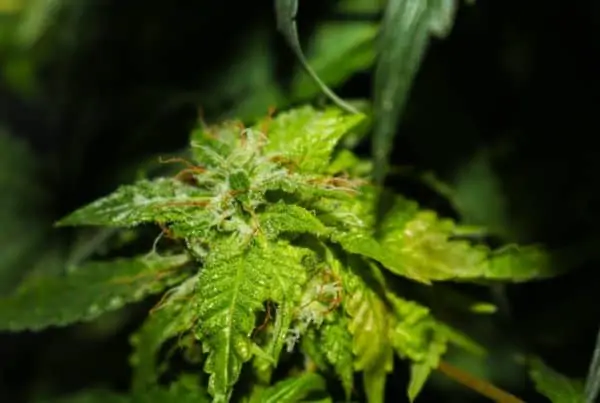TABLE OF CONTENTS
Why is my weed plant growing tall and skinny? That's one of the most frequently asked questions by new cannabis growers. Tall and skinny plants, especially indoors, can pose a problem down the line. Unfortunately, there are many possible causes of the unusual height and thickness of your plants.
From not having the right cannabis lighting set-up to keeping the plants in the vegetative stage for too long, the cause of your plant's growth spurt can be difficult to determine. If you're having difficulty troubleshooting your stretching problem, our beginner’s cultivation guide goes through all the possible causes and solutions to your growing pains.
Why Is My Weed Plant Growing Tall and Skinny?
As a new cannabis grower, it can be frustrating when your plants don't look like the images you see online of bushy and vigorous-looking plants. There's no clear-cut answer as to why plants grow tall and skinny. Consider every one of the following causes to determine if any specific one is the reason for your lanky plants.
- Genetics: The growing characteristics of your plants are largely influenced by their genetics. Of course, cultivation practices have a lot to do with your plants' growth. But, there are some strains that are known to grow very tall, although not all grow skinny stems. Research the particular strain you plan on growing beforehand to ensure you have enough space for its vertical growth.
- Long Vegetative Stage: After germination, the plant undergoes a vegetative stage where it grows most of its foliage. Vegetative periods can extend for a few weeks to a few months depending on your genetics. Keeping your plant in this stage for longer than necessary can lead to excessive vertical growth (not necessarily skinny growth) . As always, research your strain beforehand to transition your plant throughout its growth cycle at the appropriate time.
- Distant Lights: Plants may stretch far if they are trying to reach a light source that is too far. Generally, this can occur with light-emitting diode (LED) lights since they are kept at a greater distance than high-intensity discharge (HID) or fluorescent lights. Consider the strength of your bulbs and the amount of vertical indoor space you have. it may take some fine-tuning to get the light distance just right.
- Weak Light Source: On a similar note to distant lights, a weak light source can cause unnecessary stretching and growth in your plants. A light bulb that does not emit the necessary watts and lumens for your specific growth stage can force plants to grow tall and skinny in order to absorb the weak light. Generally, this problem can occur with fluorescent bulbs, which are the weakest compared to LED or HID bulbs.
- Uneven Light Distribution: You can have the right type of light at the right distance and still produce tall and skinny plants. Usually, this is due to plants that receive significant light from the top but not enough from the sides. Growers usually handle this by using grow rooms with reflective materials on the sides or using supplemental lighting on the sides.
What Happens When Plants Get Too Tall and Skinny?
There are many reasons why you should try to fix the issue of tall and skinny plants. Letting the plants grow without fixing the root cause of the growth problems can result in even more issues down the road.
- Weak Stem: If your plant hasn't formed a strong and sturdy main stalk, it won't be able to hold itself up. In the seedling and vegetative stages, the plants may seem droopy and bent due to their top-heavy growth. During its flowering stage, the problem gets worse. The bud growth can become too heavy and cause a plant to bend, fall, and possibly get damaged in the process.
- Nutritional Deficiencies: A tall and skinny plant can lead to an inefficient use of nutrients. Most of its energy will be focused on keeping the stalk upright. As a result, it'll use the spare nutrients to grow its buds and trichomes. It's not as easy as giving your plant extra nutrients since you will increase the risk of overfeeding and nutrient burn.
- Space Limitations: For most growers, a tall and skinny plant can quickly leave them without the appropriate amount of space for the plant or the lighting system. As a result, the plants may get too close to the lights (not ideal) and require heavy pruning, which can reduce your yields.
- Light Burns: In addition to the space limitations, your giant and slender plant can reach up to or close to your lights. Being too close, especially to LED or HID bulbs, can burn your plants. If the problem isn't fixed, you may ruin your crop since you can't remove the lights and you can't leave them there which can increase the risk of burning your plants.
- Bad Climate: Tall and skinny plants can absorb more heat from the light source and release it into the environment causing a vicious hot cycle. In addition, the tall plants can prevent optimal airflow and ventilation, which can increase the risk of mold and disease.
How to Stop a Plant From Growing Tall and Skinny
Now that you know the possible causes and issues that can stem from excessive vertical growth, let's discuss the solutions. Here are a few ways to keep your plants from stretching too far and growing weak and thin stems.
- Select the Right Genetics: It all starts with the genetics you choose. Generally, sativas tend to grow taller than indica strains. In addition, autoflowering plants don't get very tall. Consider your vertical space and research a strain that can fit within these limits.
- Low-Stress Training (LST): LST is a gentle method of training your plants. In this type of technique, you'll be gently bending and tying branches together and down. However, there is a risk of over-bending the main stalk and branches and breaking them. If done correctly, the plant will not only stop growing tall and skinny, but you'll create a wider canopy for better light distribution.
- Avoid Long Vegetative Stages: It's not recommended to leave your plants in the vegetative stage for longer than needed, unless you're an expert grower who can compensate for the extra branches and leaves. Research how long your strain needs to be in its vegetative stage, and, if necessary, keep it under the recommended amount if it grows too tall and skinny.
- Keep Lights at an Appropriate Distance: Before planting your plants, consider how far your specific grow light needs to be from the cannabis plant. Knowing this information can help you choose the right genetics to reduce the risk of burning your plant with your lights.
- Select the Right Lights: If you plan on using fluorescent or LED bulbs, ensure that they produce enough light to keep your plants healthy, since your bulbs may need to be a certain distance away. If necessary, get additional bulbs or stronger ones. HID bulbs can provide the most lumens and light output, but are more expensive and complicated to use. In addition, you may need to compensate for the excessive heat production of HID bulbs.
- Use a Large Grow Space: If possible, select a grow room that is large enough to reduce or eliminate the problem of tall and skinny plants. Rooms with a higher ceiling can allow you to properly space your plants and lights. This can help reduce the chance of stretching the plants too far.
- Prune Your Plants: If your plant is already too tall for comfort, it may be time to start pruning some of the excess foliage. It's best to perform this before your plants begin their flowering stage. This allows them to recover before they begin flowering and gives them enough space for their growth during the next stage. In some cases, a plant doubles its height during the flowering period.
- Invest in Reflective Materials: Reflective materials on the walls of your grow room can do wonders for the light distribution inside. Instead of having a single light source on top, the light bounces off of the sides and hits every angle of the plant for more reliable growth, not just vertical growth. If necessary, add supplemental lighting along the sides to get a bushier plant.
- Use Netting: Nets and screens can limit the height of your plants while improving the lights distribution. A screen can extend your canopy wider so that every branch gets the right amount of light. The screen of green (SCROG) method is a popular technique to consider.
Become a Master Grower
If you're growing tall and skinny plants, there is still hope for your crop. Consider every one of the root causes and try out a few solutions listed above. Tall and skinny plants are only one of the many possible problems that can pop up along the way. Cannabis Training University can prepare you to troubleshoot nearly every issue with ease.
Marijuana Grow Kit for Home Use
For a low cost and very easy to use grow kit for growing weed check out the inventory at A Pot for Pot. Grow one plant at home or grow a few marijuana plants in a simple setup.
“
There are over 300,000 jobs in the cannabis industry. CTU trained me for one of them!

Makes $24.50 @ THC +

Luis Cordova
Luis Cordova is a distinguished author, and renowned expert in cannabis cultivation, who possesses a Master's degree in Plant Biotechnology and Pharmaceutical Science. As a valued contributor to highly esteemed publications such as Cannabis Training University and Maximum Yield Magazine, Luis has emerged as a trusted source of guidance and knowledge in the cannabis industry. Having written thousands of informative articles, Luis is widely recognized for his comprehensive expertise on cultivating cannabis, both indoors and outdoors.












 Jeff was involved in an accident where he endured a traumatic brain injury. He had a week-long stay in ICU where brain surgeons
Jeff was involved in an accident where he endured a traumatic brain injury. He had a week-long stay in ICU where brain surgeons  100% risk free money back guarantee within 48 hours after purchase if student has not completed any of the courses or exams.
100% risk free money back guarantee within 48 hours after purchase if student has not completed any of the courses or exams.